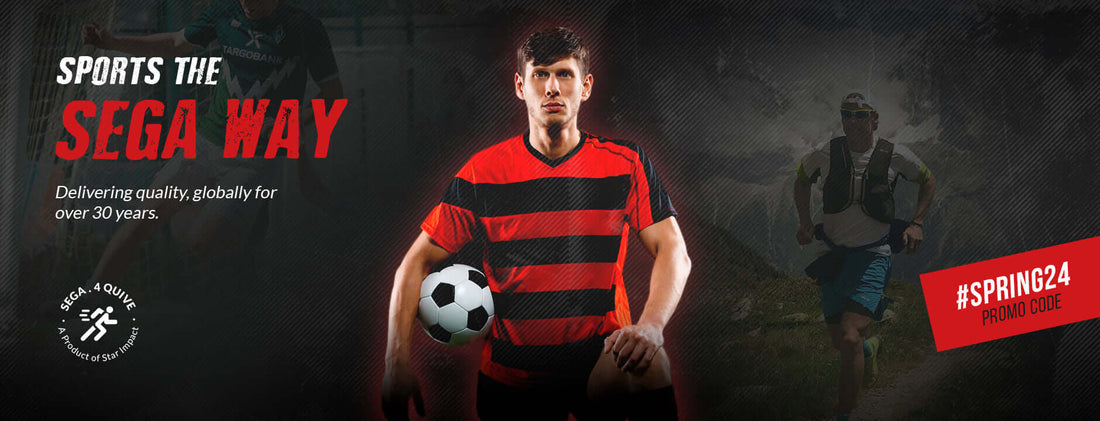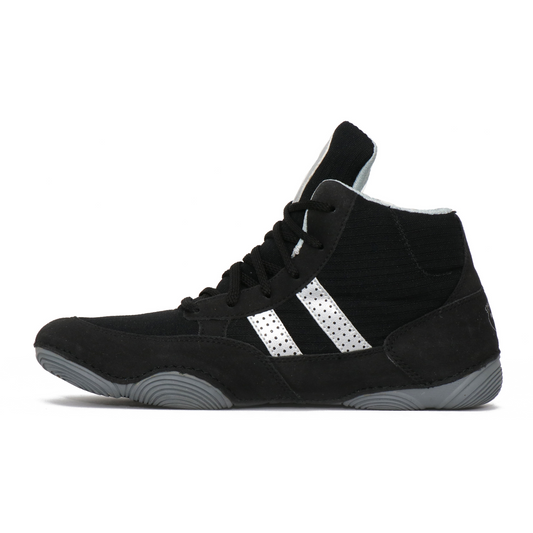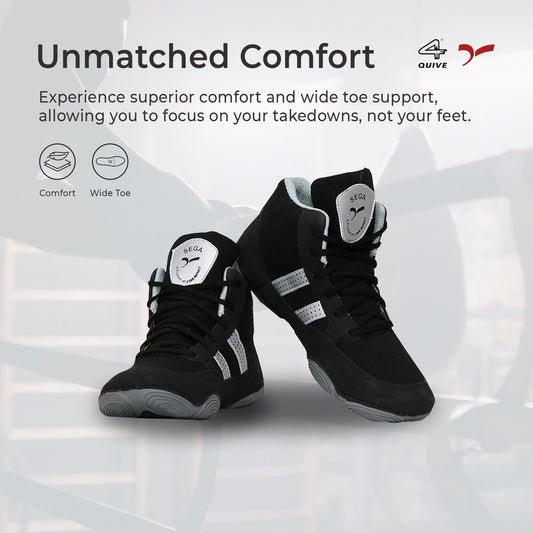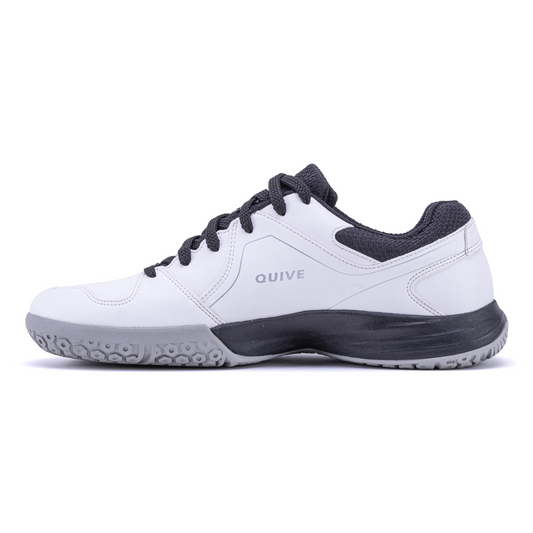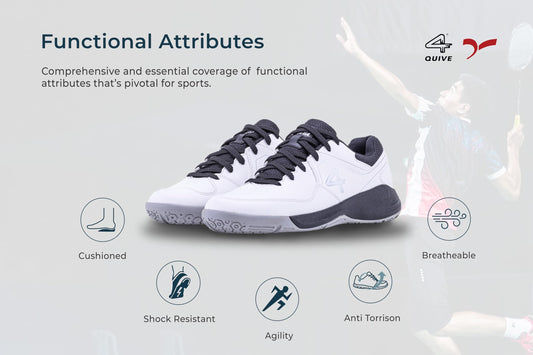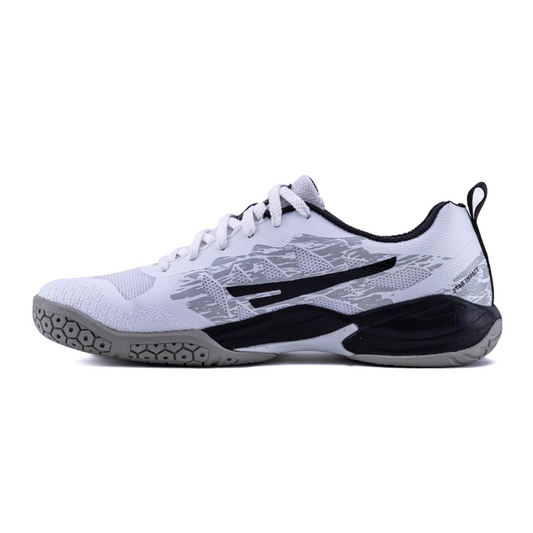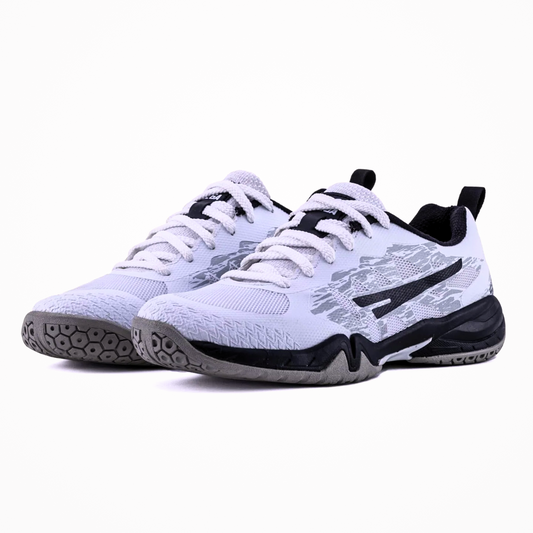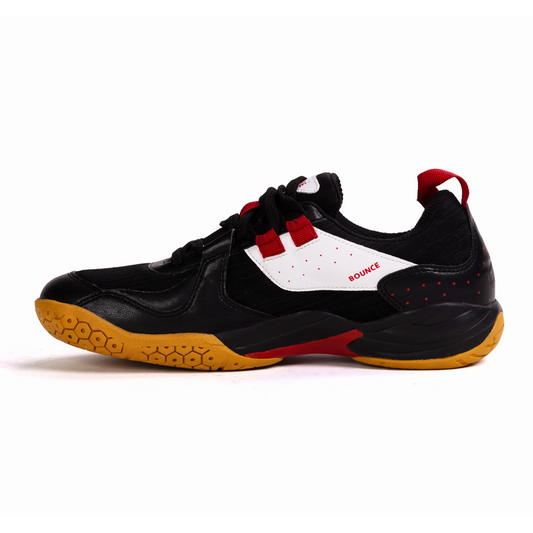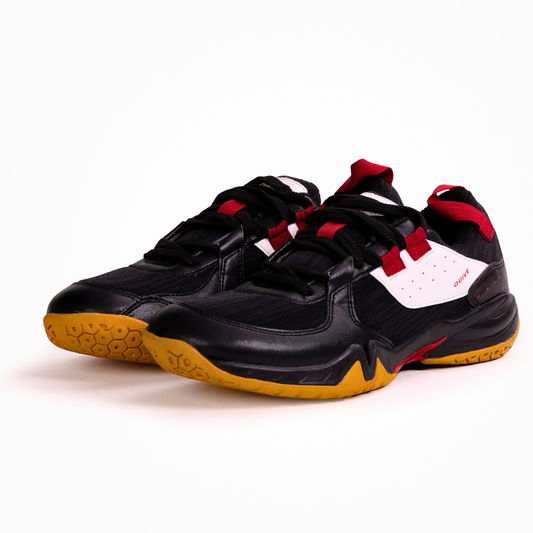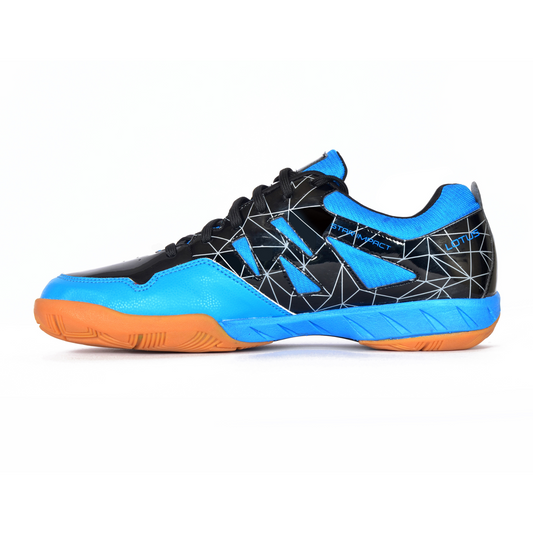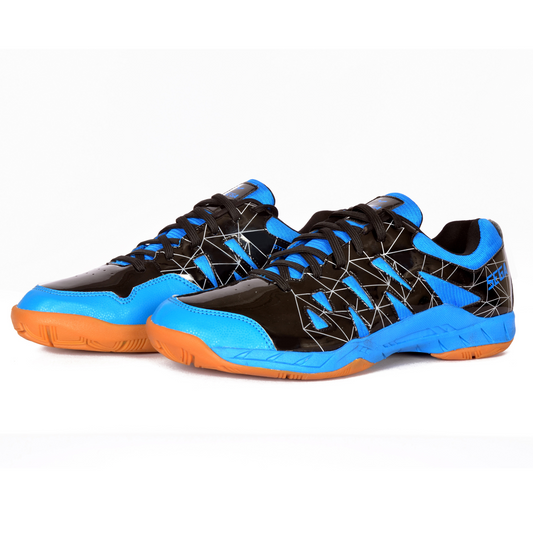Frequently Asked Questions
Are tennis shoes good for running?
At QUIVE, our tennis shoes such as the QUIVE BOUNCE and QUIVE SEGA LOTUS are designed for stability, grip, and quick side-to-side movements, making them excellent for court play. While they can be worn for short runs or casual jogging, they aren’t specifically built for long-distance running. For extended runs, cushioned running trainers like our Sega Comfort R7 would provide better shock absorption and comfort.
Are tennis shoes good for walking?
Our QUIVE tennis shoes, including the QUIVE BOUNCE and QUIVE SEGA LOTUS, are designed with comfort and stability in mind, which makes them perfectly suitable for walking as well as court sports. Their supportive cushioning and durable grip ensure you stay comfortable whether you’re on the tennis court or simply walking throughout the day.
Are tennis shoes good for gym?
Yes, our QUIVE tennis shoes, like the QUIVE BOUNCE and QUIVE SEGA LOTUS, can be a great choice for the gym. They provide excellent lateral support, grip, and stability, which are ideal for strength training, cardio sessions, and general workouts. While running-specific trainers may be better for long treadmill runs, QUIVE tennis shoes deliver the versatility and comfort needed for most gym activities.
Are tennis shoes worth it?
Yes, tennis shoes are worth it and are an essential piece of equipment for playing tennis because they are specifically designed to support the unique lateral movements and explosive starts and stops required in the sport, reducing the risk of injury from inadequate traction, support, and shock absorption compared to regular running or gym shoes.
Are tennis shoes good for netball?
Our QUIVE tennis shoes, such as the QUIVE BOUNCE and QUIVE SEGA LOTUS, are well-suited for netball as they’re built for fast movements, stability, and strong grip on indoor and outdoor courts. Their supportive design helps with quick directional changes, making them a reliable option for players who enjoy both tennis and netball.
Are tennis shoes good for badminton?
Yes, our QUIVE tennis shoes, including the QUIVE BOUNCE and QUIVE SEGA LOTUS, are also excellent for badminton. They’re designed with lightweight cushioning, strong grip, and lateral support, making them versatile for quick movements and agility on the court. With QUIVE, you get shoes that perform equally well across both tennis and badminton.
Can tennis shoes be used for squash?
Our QUIVE tennis shoes, like the QUIVE BOUNCE and QUIVE SEGA LOTUS, can definitely be used for squash. They are designed with durable non-marking soles, strong grip, and lateral stability, making them suitable for the fast-paced movements and quick turns required in squash. With QUIVE, you get versatile footwear that performs across multiple court sports.
Can tennis shoes be used for pickleball?
Yes, our QUIVE tennis shoes, such as the QUIVE BOUNCE and QUIVE SEGA LOTUS, are a great fit for pickleball. Since pickleball requires quick lateral movement, stability, and good traction, these shoes provide the same supportive grip and cushioning that make them excellent for tennis, badminton, and squash. With QUIVE, you get versatile court shoes perfect for pickleball too.
Can tennis shoes be used for basketball?
Our QUIVE tennis shoes, like the QUIVE BOUNCE and QUIVE SEGA LOTUS, can be used for casual basketball play since they offer good grip, cushioning, and lateral support. However, for intense or professional basketball, shoes specifically designed with higher ankle support may be better. Still, QUIVE tennis shoes provide the comfort and stability needed for light basketball games and multi-sport use.
Can tennis shoes go in the dryer?
No, tennis shoes should not be put in a dryer, as the high heat can damage the glue, cause materials to shrink, and warp the shoes, affecting their fit and lifespan. Instead, air-dry tennis shoes, stuffing them with newspaper or a towel to help maintain their shape, or use a fan to speed up the process.
How tennis shoes should fit?
Tennis shoes should fit snugly but comfortably, providing ample space for your toes while preventing your heel from slipping. You should have about a half-inch of space between your longest toe and the end of the shoe, and your toes should be able to wiggle freely. The width should allow your foot to feel secure without being squeezed, and the heel should be stable without lifting during movement.
How tennis shoes are made?
Tennis shoes are made in a factory using a precise assembly process: raw materials are cut by machines, then stitched to form the upper part of the shoe around a mold called a "last". The sole, a combination of cushioning and a rubber outsole for traction, is then cemented and attached to the lasted upper. Finally, the shoe undergoes quality control checks for fit, look, and performance before being packaged and shipped.
How tennis shoes are different?
Tennis shoes differ from other athletic shoes, such as running shoes, because they are specifically designed for the dynamic, lateral movements common in tennis, providing enhanced stability and support for quick starts, stops, and side-to-side motion. Key differences include a flatter, more durable outsole for court grip, thicker uppers for durability during changes in direction, and features like wings for lateral stability to prevent ankle twisting.
What tennis shoes for grass?
For grass courts, our QUIVE tennis shoes—including the QUIVE BOUNCE and QUIVE SEGA LOTUS, are a reliable choice. Designed with durable non-marking soles, secure lateral support, and lightweight cushioning, they provide the grip and balance needed on the faster, sometimes slippery surface of grass courts. With QUIVE, you get versatile tennis shoes that perform well across different court types, including grass, making them a smart option for all-round players in the UK. Other popular options are Adidas Barricade Grass Tennis Shoes, Asics Gel Resolution X Tennis Shoes, Babolat Jet Tere 2.
When were tennis shoes popular?
Tennis shoes became widely popular in the mid to late 20th century, with specific brands and models driving their rise in popularity through the 1970s, 1980s, and especially the 1990s and early 2000s, with ongoing popularity to this day.
Which tennis shoes are the best?
At QUIVE, we believe the best tennis shoes are the ones that combine comfort, grip, and durability for all-round performance on court. Our top picks include the QUIVE BOUNCE Badminton Tennis and Squash Court Shoes and the QUIVE SEGA LOTUS Badminton Tennis and Squash Court Shoes, both designed with lightweight cushioning and strong lateral support to help you move quickly and confidently. For players who want versatile shoes that work across tennis, badminton, and squash, the QUIVE SEGA RP24 Trainers and QUIVE SEGA HYPER Court Shoes are also excellent choices, making our collection some of the best tennis shoes available across the UK. Other brands offers ASICS Court FF 3 for overall performance, the Adidas Barricade 13 for stability, and the Diadora Blushield Torneo 3.
Which tennis shoes are best for hard court?
For hard courts, our QUIVE BOUNCE and QUIVE SEGA LOTUS tennis shoes are the best options, built with durable outsoles, strong grip, and cushioned midsoles to handle the tough surface while keeping you comfortable. They provide excellent lateral support and stability, making them ideal for players who want reliable performance on hard courts across the UK. Others such as the NikeCourt Air Zoom Vapor Pro or Asics Gel Resolution 9, which provide stability and comfort.
Which tennis shoes are the most comfortable?
When we talk about the most comfortable tennis / court-style shoes, a lot depends on features like cushioning, fit, upper material, and how well they support quick movements. Looking at the QUIVE collection: The QUIVE BOUNCE stands out as especially comfy — it has a no-sew upper (fewer seams means fewer hot-spots), layered cushioning, and a high-rebound EVA midsole that helps absorb impact and ease stress on feet. Also, the QUIVE SEGA HYPER model offers “Power Cushioning” that enhances shock absorption, making it another great option for comfort during long matches or hours on court. ASICS Gel Resolution 9 for comfort and support and the Hoka Bondi SR is noted for its cushioned midsole are some other popular choices.
Why tennis shoes are important?
Tennis shoes are crucial for preventing injuries by providing specific support, stability, and cushioning for the unique side-to-side movements in tennis. They feature flat soles, specialized treads for grip on different court surfaces, reinforced materials for durability, and lateral support to prevent ankle rolls, all of which are essential for quick stops, starts, and changes in direction on the court.
Will tennis shoes stretch?
Yes, tennis shoes can stretch, but it depends on the material; synthetic materials may offer less stretch than leather, and stretching is generally more effective in width than length. Ways to stretch them include wearing them to gradually break them in, using a shoe stretcher to apply gentle, sustained pressure, applying heat with a hairdryer and stretching while warm, or using a freezing technique with water in bags to expand the material from the inside.
